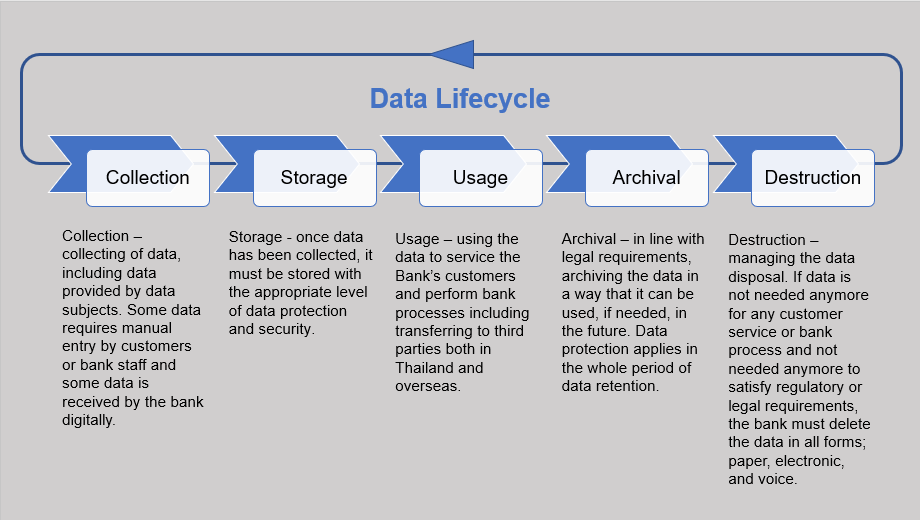Top Tips for Ensuring Secure Data Destruction in Your Cyber Security Strategy
Top Tips for Ensuring Secure Data Destruction in Your Cyber Security Strategy
Blog Article
How Correct Data Damage Contributes to Robust Computer Protection Services and Mitigates Threats of Data Violations
In today's electronic landscape, the significance of appropriate data damage can not be overstated, as it serves as a basic element of thorough computer safety and security solutions. The effects of insufficient information destruction prolong beyond simple compliance; they can exceptionally influence a company's cybersecurity posture and credibility.
Value of Data Damage
In today's digital landscape, the importance of information devastation can not be overstated. As companies significantly depend on digital assets, the possible risks associated with data violations and unauthorized access intensify. Effective information devastation is a vital part of an extensive details safety approach, securing delicate details from coming under the hands of harmful actors.
When information is no more required, just deleting files or formatting hard disks is not enough. Residual data can frequently be recouped using conveniently available devices, presenting significant hazards to both people and organizations. This underscores the necessity for robust data devastation techniques that ensure all information is irretrievably removed.
Moreover, governing conformity mandates, such as GDPR and HIPAA, highlight the obligation to protect sensitive information, including its proper disposal. Non-compliance can bring about extreme legal repercussions and punitive damages. data destruction. Therefore, incorporating reliable data damage protocols not just enhances security however also fortifies a company's online reputation and reliability

Techniques of Secure Data Erasure
Several reliable methods of secure information erasure can be utilized to guarantee that delicate info is completely removed from storage gadgets. One extensively identified strategy is information overwriting, which includes changing existing data with random patterns several times. This approach dramatically lowers the possibilities of data recovery, although it might not be efficient versus sophisticated forensic techniques.

Physical damage is also a reliable strategy, where storage space tools are made unusable with shredding, crushing, or incineration. This method makes certain that data can not be recouped whatsoever but requires careful handling of dangerous products.
Last but not least, specialized software devices designed for protected information erasure supply capabilities that adhere to numerous erasure criteria. These devices often include attributes like confirmation procedures to validate successful data damage.
Using these methods in mix can boost data safety and security and reduce the threats related to data violations, making sure that delicate info is not unintentionally exposed.
Legal and Conformity Considerations
The techniques used for secure information erasure not only serve to shield sensitive details but additionally needs to align with legal and conformity structures controling information defense. Organizations are called for to abide by various policies, such as the General Information Protection Guideline (GDPR), the Medical Insurance Transportability and Accountability Act (HIPAA), and the Repayment Card Market Data Security Requirement (PCI DSS) These laws mandate details procedures for data managing and damage, making certain that individual and delicate information is irretrievably erased when no more needed.
Failing to abide by these lawful needs can result in significant charges, including fines and reputational damage. Furthermore, organizations need to keep documents of information damage procedures, showing compliance throughout audits or examinations. This paperwork not just secures versus legal repercussions however likewise strengthens depend on with stakeholders and customers, showcasing a dedication to data security.
Including lawful and conformity considerations right into information devastation methods is necessary for any kind of organization. It lessens the danger of data breaches and highlights an aggressive technique to safeguarding sensitive info, eventually fostering a society of protection and responsibility throughout the company.
Influence on Cybersecurity Stance
Effective information destruction significantly enhances a company's cybersecurity stance by reducing the potential strike surface for cyber risks. When delicate data is not effectively damaged, it continues to be easily accessible to harmful stars that can exploit this details for unauthorized gain access to, identification theft, or corporate espionage. By implementing durable data devastation protocols, organizations can efficiently lessen the threat of data violations and enhance their overall safety structure.
In addition, the protected disposal of unnecessary or out-of-date information not only protects sensitive information but likewise aids organizations conform with sector policies and criteria. Failure to effectively destroy information can cause extreme lawful repercussions check my site and reputational damage, additional compromising an organization's cybersecurity position.

Ultimately, focusing on effective data damage is vital for cultivating a robust cybersecurity position, making certain that organizations stay attentive versus developing cyber dangers while securing their essential assets and stakeholders.
Ideal Practices for Organizations
Applying best practices for information devastation is critical for companies intending to secure sensitive information and alleviate cybersecurity threats. Organizations must establish a detailed data devastation plan that describes responsibilities and procedures. This plan ought to abide by relevant guidelines, such as GDPR or HIPAA, guaranteeing legal conformity.
Secondly, it is important to make use of accepted information sanitization methods, learn this here now including information wiping, degaussing, and physical damage, customized to the kind of data and storage medium. Employing licensed experts for data damage solutions boosts the integrity of these methods.
Furthermore, companies must maintain a thorough inventory of all data storage tools, guaranteeing that all out-of-date or replaced devices undergoes devastation. Normal audits of data destruction techniques can assist determine weak points and enhance conformity.
Employee training is one more vital facet, as personnel needs to recognize the relevance of information devastation and follow established protocols. Finally, companies should document all data damage activities to offer liability and traceability, which can be important during audits or in the event of a violation.
Conclusion

One commonly acknowledged strategy is information overwriting, which entails changing existing information with arbitrary patterns numerous times.The techniques employed for safe data erasure not just serve to secure sensitive information yet additionally should align with legal and conformity frameworks governing data protection. These policies mandate details protocols for data taking care of and devastation, guaranteeing that delicate and individual data is irretrievably eliminated when no longer needed.
By implementing durable information destruction protocols, companies can effectively lessen the risk of data violations and improve their overall safety and security framework.
In final thought, proper information devastation is important for read this post here boosting computer system safety and security solutions and mitigating the dangers linked with data breaches. - data destruction
Report this page